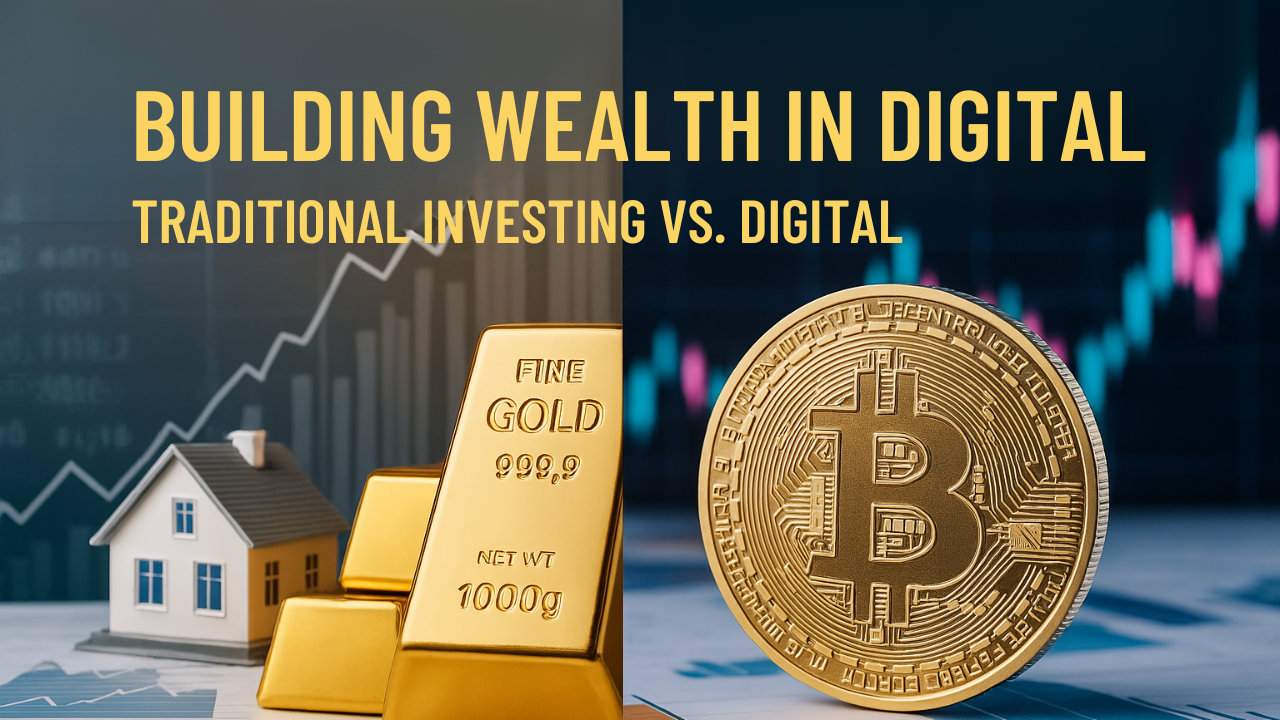Inflation—once a distant concern for many—is now front and center in the minds of investors, consumers, and policymakers alike. From rising grocery bills to soaring housing costs, inflation erodes the purchasing power of money. For investors, it poses a serious question: How can I protect—and grow—my wealth in an inflationary environment?
In this guide, we break down how inflation affects your investments, which assets traditionally perform well during inflationary periods, and smart strategies to safeguard your portfolio.
What Is Inflation—and Why Does It Matter to Investors?
Inflation refers to the rise in prices of goods and services over time, which reduces the real value of money. For example, if inflation is 5%, your $100 today will only buy $95 worth of goods a year from now.
While modest inflation is a normal part of a growing economy, sustained high inflation can severely impact:
- Your savings
- The real returns on investments
- Consumer spending and business profits
That’s why savvy investors need to understand how different asset classes behave during inflationary periods—and adjust accordingly.
Inflation’s Impact on Major Asset Classes
1. Cash and Savings Accounts
Cash may feel safe, but during inflation, it loses value every day.
- A high-yield savings account paying 2% interest in an economy with 6% inflation delivers a -4% real return.
- Holding too much cash during inflation means guaranteed loss of purchasing power.
Strategy: Keep only enough cash for an emergency fund (3–6 months of expenses) and invest the rest in inflation-resistant assets.
2. Bonds
Fixed-income investments like bonds typically suffer during inflation because their interest payments lose purchasing power.
- Long-term bonds are most vulnerable, especially government and corporate bonds with low yields.
- As interest rates rise (to combat inflation), bond prices fall—especially long-duration bonds.
Strategy: Favor short-duration bonds, floating-rate bonds, or inflation-protected securities (like TIPS).
Smart Investments for Inflation Protection
1. Treasury Inflation-Protected Securities (TIPS)
TIPS are U.S. government bonds specifically designed to protect against inflation.
- The principal adjusts with changes in the Consumer Price Index (CPI).
- You earn interest on the inflation-adjusted principal, helping maintain real value.
Why TIPS Work: Safety, stability, and a built-in hedge against inflation—ideal for conservative portfolios.
2. Gold and Precious Metals
Historically, gold has been viewed as a safe haven during inflation and market uncertainty.
- Gold maintains intrinsic value and isn’t tied to any currency.
- During high inflation or financial crises, gold prices often surge.
Considerations:
- Gold doesn’t produce income (like dividends or interest).
- Best used as a hedge—not the foundation of a portfolio.
Ways to Invest:
- Physical gold (coins, bars)
- Gold ETFs like GLD
- Gold mining stocks
3. Commodities Beyond Gold
While gold gets most of the spotlight, other commodities often perform well during inflation:
- Oil, natural gas
- Agricultural products like wheat, soybeans, and corn
- Industrial metals like copper and aluminum
Strategy: Consider broad-based commodity ETFs such as DBC or GSG for diversified exposure.
4. Real Estate
Real estate has traditionally performed well during inflation due to:
- Rising property values
- Rental income that can adjust with inflation
- Tangible nature—real assets tend to keep up with inflation
Types of Real Estate Investments:
- Direct property ownership (residential, commercial)
- REITs (Real Estate Investment Trusts) for a more liquid, diversified option
Tax Benefits: Real estate offers tax advantages and serves as a long-term store of value.
Important Consideration: Rising interest rates can increase mortgage costs and reduce affordability, impacting demand and valuations—especially for highly leveraged real estate or certain REITs.
5. Dividend-Paying Stocks
Certain stocks—especially those of high-quality, dividend-paying companies—can offer protection during inflation:
- Companies with pricing power can pass higher costs onto consumers.
- Dividend income helps offset inflation and provide real returns.
- Sectors like utilities, consumer staples, and energy often hold up well.
Look for:
- Dividend growth stocks (those that raise payouts over time)
- Strong balance sheets and competitive advantages
Tactical Hedging Strategies
1. Commodities Exposure
We’ve covered gold and other individual commodities, but investors can also consider:
- Commodity ETFs (e.g., DBC, PDBC)
- Futures contracts for more direct exposure (advanced investors only)
2. Sector Rotation
Shift your portfolio into sectors that typically benefit from inflation, including:
- Energy
- Materials
- Industrials
- Consumer staples
Avoid rate-sensitive sectors like:
- Tech (especially unprofitable growth stocks)
- Utilities (due to high capital costs and interest rate sensitivity)
3. Global Diversification
Some international markets can perform better during inflationary periods.
Emerging Markets:
- Resource-rich countries (like Brazil, Indonesia, or South Africa) often benefit from rising commodity prices.
- May offer growth when developed markets are struggling.
Currency Advantage:
- Some currencies, like the Swiss franc, Canadian dollar, or Norwegian krone, are less vulnerable to inflationary erosion.
Strategy: Use global mutual funds or ETFs (like EEM, EMB, or VEU) to gain diversified exposure.
Final Thoughts: Stay Invested, Stay Informed
Inflation is a reality we all must face—but with the right investment strategy, it doesn’t have to eat away at your wealth.
Key Takeaways:
- Avoid holding excess cash or long-term bonds during inflation.
- Focus on real assets (real estate, commodities), inflation-linked securities (TIPS), and high-quality dividend stocks.
- Add emerging market exposure and global diversification.
- Use sector rotation and commodity hedging to stay nimble.
- Always keep a long-term focus—panic selling leads to poor outcomes.
Inflation challenges investors to rethink old assumptions and pivot smartly. With the right tools and awareness, your portfolio can not only survive—but thrive—in an inflationary world.







